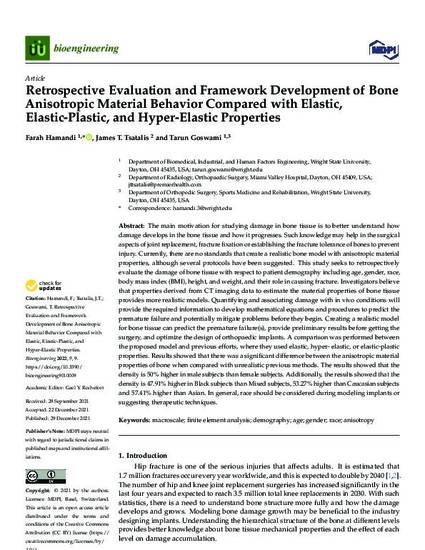
The main motivation for studying damage in bone tissue is to better understand how damage develops in the bone tissue and how it progresses. Such knowledge may help in the surgical aspects of joint replacement, fracture fixation or establishing the fracture tolerance of bones to prevent injury. Currently, there are no standards that create a realistic bone model with anisotropic material properties, although several protocols have been suggested. This study seeks to retrospectively evaluate the damage of bone tissue with respect to patient demography including age, gender, race, body mass index (BMI), height, and weight, and their role in causing fracture. Investigators believe that properties derived from CT imaging data to estimate the material properties of bone tissue provides more realistic models. Quantifying and associating damage with in vivo conditions will provide the required information to develop mathematical equations and procedures to predict the premature failure and potentially mitigate problems before they begin. Creating a realistic model for bone tissue can predict the premature failure(s), provide preliminary results before getting the surgery, and optimize the design of orthopaedic implants. A comparison was performed between the proposed model and previous efforts, where they used elastic, hyper- elastic, or elastic-plastic properties. Results showed that there was a significant difference between the anisotropic material properties of bone when compared with unrealistic previous methods. The results showed that the density is 50% higher in male subjects than female subjects. Additionally, the results showed that the density is 47.91% higher in Black subjects than Mixed subjects, 53.27% higher than Caucasian subjects and 57.41% higher than Asian. In general, race should be considered during modeling implants or suggesting therapeutic techniques.
Available at: http://works.bepress.com/tarun-goswami/116/

This work is licensed under a Creative Commons Attribution 4.0 International License.